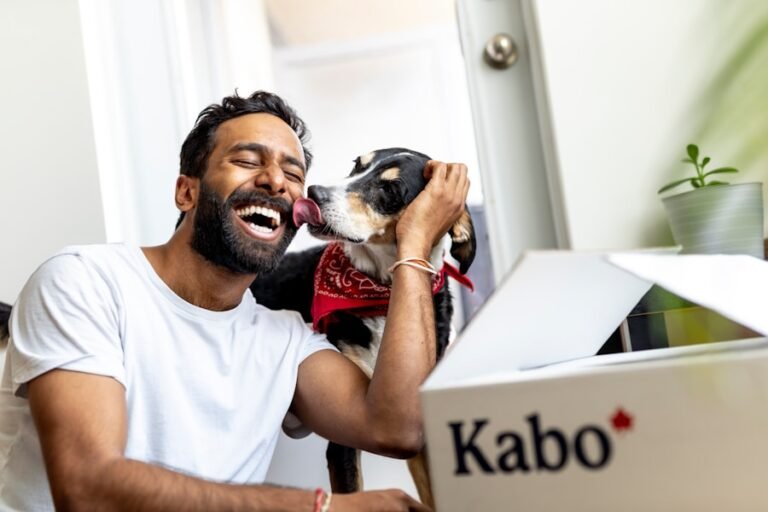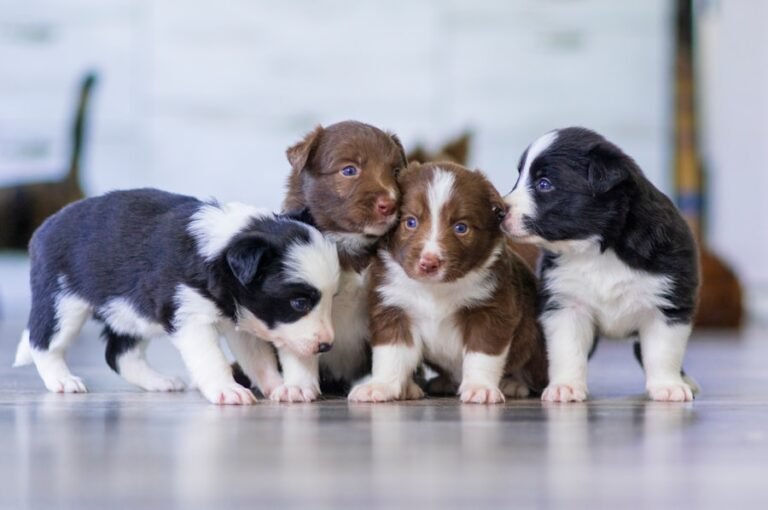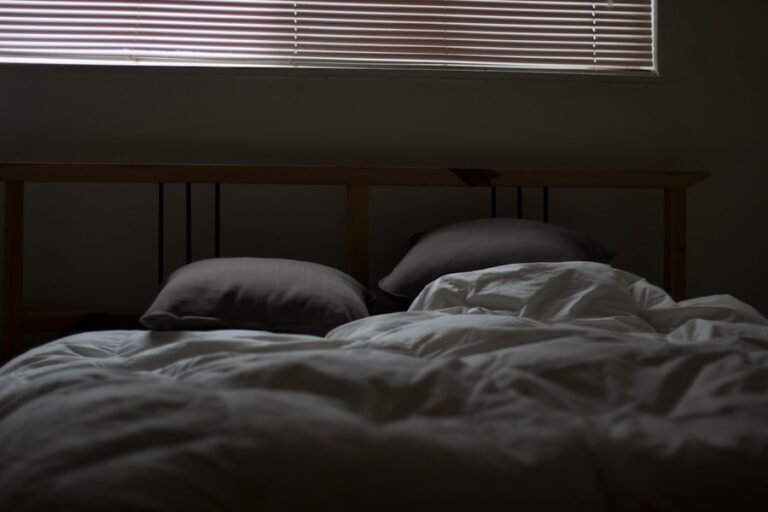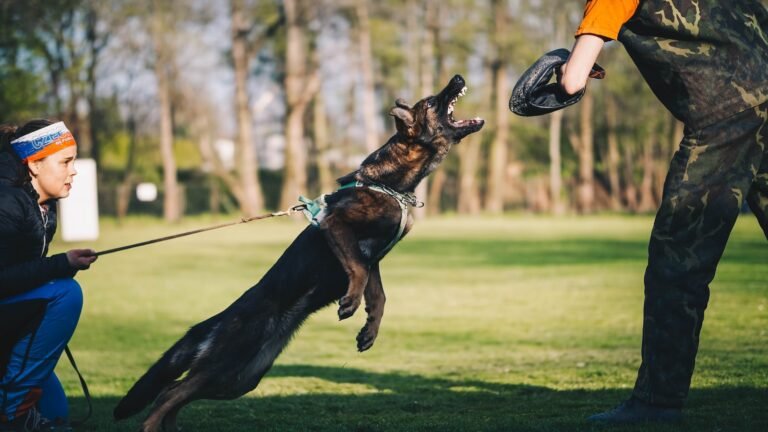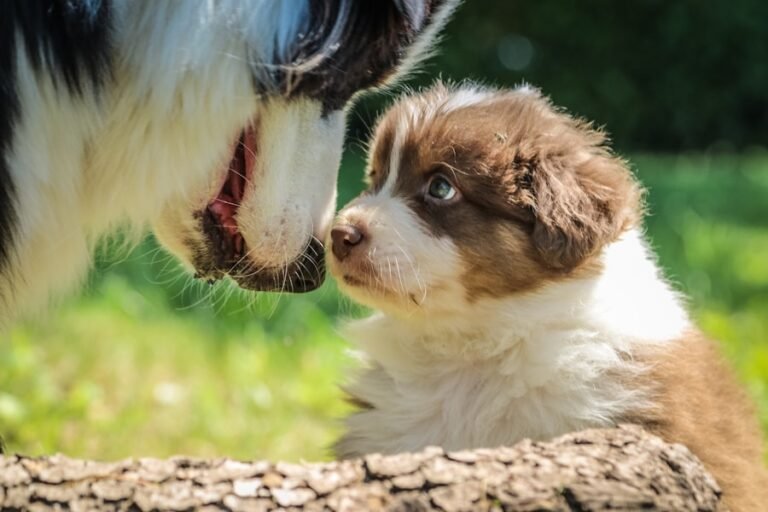How To Potty Train A Stubborn Puppy: Top 10 Keys For Amazing Success
Are you wondering how to potty train a stubborn puppy? Well, bringing home a new puppy is an exciting and joyous adventure. Those big eyes, wagging tail, and irresistible charm can melt anyone’s heart in an instant. But along with the cuddles and playtime comes the not-so-glamorous task of potty training.
Ah yes, the dreaded accidents on your favorite rug or that moment when you realize it’s time to invest in extra cleaning supplies! But fear not, dear reader, for we are here to guide you through this journey with patience, knowledge, and plenty of treats (for both you and your furry friend!).
So grab your leash and let’s dive into the world of potty training – because nothing beats that feeling of success when your pup finally learns where to do their business!
Understanding the Puppy’s Development
How long does it take to learn how to potty train a stubborn puppy? Puppies are adorable bundles of joy, but they don’t come pre-programmed with knowledge of where and when to relieve themselves. As a responsible pet owner, it’s important to understand their development process in order to effectively potty train them. This will help you to find learn how long does it take to potty train a puppy.
During the first few weeks of life, puppies rely on their mother to stimulate elimination by licking their genital area. As they grow older and begin exploring their surroundings, they start developing bladder and bowel control. However, it’s essential to remember that each puppy is unique and will progress at its own pace.
Around 8 weeks old, puppies can start learning basic commands like “sit” or “stay.” This is also a good time to introduce them to a designated potty area. Consistency is key during this stage – take your puppy outside frequently after meals, naps, or playtime.
As your puppy grows older (around 12-16 weeks), you might notice longer periods between bathroom breaks as they gain better bladder control. However, accidents may still happen occasionally due to their smaller bladders.
Positive reinforcement plays a crucial role in learning how to potty train a stubborn puppy. Whenever your puppy eliminates in the appropriate spot outside, praise them enthusiastically and offer treats as rewards. This positive association helps reinforce desired behavior.
It’s vital for pet owners to pay attention and recognize signs that indicate when a puppy needs to eliminate – sniffing around in circles or suddenly becoming restless are common indicators.
Accidents are bound to happen during the training process; it’s important not to scold or punish your pup for these mishaps as it can hinder progress and create fearfulness associated with eliminating altogether. This is an essential step in how to potty train a stubborn puppy.
With patience and consistent effort from both you and your furry friend, you’ll gradually witness improvements over time! Remember that every milestone achieved should be celebrated – whether it’s successfully going an entire day without accidents or signaling when nature calls!
In conclusion: Understanding your puppy’s developmental stages and tailoring your potty training approach accordingly is key to success. Stay
How To Potty Train A Stubborn Puppy: Establishing a Potty Training Routine
One of the key factors in how to potty train a stubborn puppy is establishing a consistent routine. Dogs, like humans, thrive on structure and predictability. By setting up a regular schedule for bathroom breaks, you can help your furry friend understand where and when they should do their business.
Start by taking your puppy outside first thing in the morning, after meals, after playtime, and before bedtime. Stick to these designated times every day to reinforce the association between going outside and relieving themselves.
When it’s time for a bathroom break, take your pup to the same spot each time. The familiar scent will signal that this is their designated potty area. Be patient and give them ample time to relieve themselves – dogs often need several minutes to find the perfect spot.
As soon as your puppy finishes doing their business outdoors, reward them with praise or treats. This positive reinforcement helps reinforce that going outside is what you want them to do.
If accidents happen indoors (and they likely will), resist scolding or punishing your pup. Instead, clean up the mess without drawing attention to it and redirect their focus back onto proper outdoor elimination habits.
Consistency is essential throughout the entire training process; even if setbacks occur along the way – don’t get discouraged! Remember that all pups learn at different speeds – some may catch on quickly while others may take more time.
By sticking with a structured routine and utilizing positive reinforcement techniques consistently over time,
you’ll be well on your way towards successful potty training for your beloved fur baby!
Positive Reinforcement and Reward-Based Training
Positive Reinforcement and Reward-Based Training can be highly effective when it comes times to learn how to potty train a stubborn puppy. This method focuses on rewarding desired behaviors rather than punishing mistakes. By using positive reinforcement, you are encouraging your puppy to repeat the behavior that you want them to learn.
When implementing this training technique, it’s important to have treats or rewards readily available. Every time your puppy successfully eliminates in the designated area, praise them enthusiastically and give them a treat as a reward. This helps them associate going potty in the right place with positive experiences.
Consistency is key with reward-based training. Make sure everyone in the household follows the same routine and uses consistent commands for going potty. This will help reinforce the association between the command and the desired behavior.
It’s also important to remember that accidents may happen during this process. If your puppy has an accident indoors, avoid scolding or punishing them as they may not understand why they are being reprimanded. Instead, clean up any messes without drawing attention to them and continue with their regular potty training routine.
By using positive reinforcement techniques consistently, you can expect your puppy to start understanding where and when they should eliminate within a few weeks or even sooner! Stay patient, consistent, and always celebrate their successes along the way!
How To Potty Train A Stubborn Puppy? Recognizing and Responding to Signs of Elimination
Recognizing and responding to signs of elimination is a crucial aspect of potty training your puppy. By paying attention to their body language and behavior, you can anticipate when they need to relieve themselves and guide them to the appropriate spot.
One common sign that your puppy may need to eliminate is sniffing or circling around a particular area. This indicates that they are searching for a suitable spot to go potty. If you notice this behavior, quickly take them outside or direct them towards their designated indoor potty area.
Another sign is restlessness or pacing. Your puppy may become agitated and start moving around in an unsettled manner when they need to use the bathroom. In such cases, gently lead them outside or towards their designated spot indoors.
Whining or scratching at doors can also indicate that your pup needs to eliminate urgently. These vocalizations are their way of communicating their needs, so it’s important not to ignore them. Respond promptly by taking them out or guiding them towards the designated area.
Accidents can happen if you fail to recognize these signs in time. However, it’s crucial not to scold or punish your puppy if this occurs as it may confuse and hinder their progress with potty training. Instead, clean up the mess without drawing attention to it and continue reinforcing positive behaviors during future training sessions.
By consistently recognizing and responding appropriately when your puppy exhibits signs of elimination, you will help create a strong foundation for successful potty training!
Dealing with Accidents and Setbacks
Accidents are inevitable when learning how to potty train a stubborn puppy. It’s important to remember that setbacks are part of the process, and patience is key. Your furry friend is still learning, so accidents should be seen as opportunities for growth rather than reasons to get discouraged.
When accidents happen, it’s crucial not to scold or punish your puppy. This will only create fear and confusion. Instead, calmly clean up the mess using an enzymatic cleaner specifically designed for pet stains. This helps eliminate any lingering odors that may attract your pup back to the same spot.
To prevent future accidents, monitor your puppy closely and take them outside frequently – especially after meals, naps, playtime or upon waking up. Stick to a consistent schedule so they can develop a routine and understand where they’re expected to go.
If you catch your puppy in the act of having an accident indoors, gently interrupt them by saying “no” or clapping softly without startling them. Then immediately take them outside to finish their business.
Remember that accidents may still happen even if you follow these steps diligently. Don’t get discouraged; just keep reinforcing positive behaviors through rewards and praise whenever your pup successfully goes potty outside.
By staying patient and persistent throughout this journey, you’ll help pave the way towards successful potty training for your precious pup!
Gradual Transition to Independence
As your puppy becomes more proficient in their potty training, it’s important to gradually transition them towards independence. This means giving them more freedom and responsibility when it comes to eliminating outside.
Start by increasing the time between potty breaks. If your puppy has been successfully holding it for an hour, try extending that to an hour and a half or two hours. Slowly increase the duration as they prove reliable.
Additionally, you can begin allowing your puppy access to larger areas of the house under supervision. This will help them learn how to control their bladder and bowels in different environments.
However, remember that accidents may still happen during this phase of training. Be patient and continue reinforcing good behavior with rewards and praise when they eliminate outside.
Remember to maintain consistency in your routine even as you give your pup more freedom. Stick to regular feeding times and take them out at predictable intervals throughout the day.
By gradually transitioning your puppy towards independence, you are setting them up for long-term success in maintaining good bathroom habits! Keep up with positive reinforcement strategies and celebrate every milestone along the way!
Tips for Troubleshooting Challenges When Learning How Long Does It Take To Potty Train a Puppy
1. Stay consistent: Consistency is key when potty training a puppy. Stick to the established routine and take your puppy outside at regular intervals, especially after meals or naps. This will help prevent accidents indoors.
2. Supervise closely: Keep a close eye on your puppy during the initial stages of potty training. Watch for signs that they need to eliminate, such as sniffing around or circling in one spot, and immediately take them outside to their designated area.
3. Limit freedom: To avoid accidents, it’s important to limit your puppy’s access to certain areas of the house until they are fully trained. Use baby gates or closed doors to confine them in a smaller space where you can keep an eye on them.
4. Clean up properly: Accidents happen, but it’s crucial to clean up any messes thoroughly using enzymatic cleaners specifically designed for pet stains and odors. These cleaners break down organic matter and discourage repeat incidents in the same spot.
5. Be patient and positive: Potty training takes time and patience, so it’s essential to remain calm and positive throughout the process. Avoid scolding or punishing your puppy for accidents; instead, focus on rewarding their successes with praise and treats.
Techniques may vary: Every puppy is unique, so be open-minded about trying different techniques if one doesn’t seem effective with your furry friend. Some puppies respond well to crate training while others may prefer using pee pads initially before transitioning outdoors.
Remember that every challenge is an opportunity for learning and growth – both for you as a pet owner and for your adorable pup! With consistency, patience, positivity, and proper troubleshooting strategies in place, you’ll find yourself making progress towards successfully potty training your lovable companion!
Celebrating Milestones and Success In Your Journey Learning How Long Does It Take To Potty Train a Puppy
As you embark on the journey of learning how to potty train a stubborn puppy, it’s important to take a moment to celebrate their milestones and successes along the way. Recognizing and celebrating these achievements can help maintain motivation for both you and your puppy.
When your pup successfully eliminates outside or in their designated potty area, make sure to offer praise and rewards immediately. This positive reinforcement will reinforce the desired behavior, making them more likely to repeat it in the future.
Remember that every puppy is unique, so progress may vary. Some puppies may catch on quickly while others may require more time and patience. It’s essential not to compare your pup’s progress with others but focus on their individual achievements. So it is hard to find out the answer to how long does it take to potty train a puppy.
Each successful bathroom trip should be met with enthusiasm! Shower your fur baby with affectionate words, gentle pets, or even a small treat as a reward for a job well done. Keep in mind that consistency is key during this process – maintaining a consistent routine will help solidify good habits.
It’s also crucial not to dwell too much on accidents or setbacks along the way. Instead of getting frustrated or discouraged by occasional mishaps, use them as learning opportunities for both you and your pup. Stay calm when accidents occur, clean up thoroughly using pet-friendly cleaning products, and then move forward without dwelling on mistakes.
Keep track of your puppy’s progress by jotting down each successful outing in a journal or using an app designed specifically for tracking potty training milestones. Recording these moments can provide encouragement during challenging times.
Don’t forget that patience is paramount throughout this entire process! Potty training takes time; there is no set timeline for success since every dog learns at their own pace. Celebrating even small victories will keep you motivated as you work towards achieving long-term success together!
So remember: cheer loudly (but gently) when they get it right – those wins are worth celebrating!
Conclusion
As we near the end of this blog post on how to potty train a stubborn puppy, it’s important to remember that potty training a puppy is a process that takes time and patience. Each puppy is unique and may progress at their own pace. While there isn’t an exact timeline for how long it takes to fully potty train a puppy, understanding their development, establishing a routine, using positive reinforcement, and recognizing signs of elimination are key factors in achieving success.
By taking the time to understand your puppy’s individual needs and behaviors, you can tailor your training approach accordingly and learn very quickly how to potty train a stubborn puppy. Consistency is crucial throughout the entire process. Remember to celebrate each milestone and success along the way.
It’s important to keep in mind that setbacks and accidents can happen during potty training. Rather than getting discouraged or frustrated, focus on staying calm and redirecting your puppy back to their designated bathroom area.
As your pup becomes more independent and reliable with their potty habits, gradually give them increased freedom within the house while still maintaining access to their designated bathroom spot.
In conclusion… when you’re learning how to potty train a stubborn puppy, remember – stay patient, consistent, positive, and attentive throughout the process of potty training your furry friend. With time and effort invested in proper training techniques tailored to your specific pup’s needs – you’ll be well on your way towards successfully potty training them!
Stay tuned for more helpful tips on raising happy puppies!
FAQ’s (How to Potty Train a Stubborn Puppy Frequently Asked Questions)
Q: How long does it take to potty train a puppy?
A: The time it takes to potty train a puppy can vary depending on factors such as the breed, age, and individual temperament. On average, it can take anywhere from a few weeks to several months for a puppy to become fully trained.
Q: Are some breeds easier to potty train than others?
A: Yes, certain breeds are known for their intelligence and quick learning abilities, which can make them easier to potty train. However, every dog is unique, so it’s important to be patient and consistent regardless of the breed.
Q: What should I do if my puppy has an accident in the house?
A: Accidents are bound to happen during the potty training process. When you catch your puppy in the act or find evidence of an accident after the fact, avoid scolding or punishing them. Instead, calmly clean up the mess and reinforce positive behaviors going forward.
Q: How often should I let my puppy outside during potty training?
A: Puppies have small bladders and may need frequent trips outside when they’re young. As a general guideline, aim for taking your pup out every 1-2 hours during waking hours. Gradually increase this interval as they mature and gain better bladder control.
Q: Can I use pee pads or indoor grass patches for potty training?
A: Pee pads or indoor grass patches can be useful tools for apartment-dwelling puppies or those with limited outdoor access. However, keep in mind that these options might prolong the overall potty training process since they teach dogs that eliminating indoors is acceptable.
Q: Is crate training helpful for potty training?
A; Crate training is often recommended as part of the overall potty training process because dogs naturally avoid soiling their sleeping areas. When used properly – not as punishment – crates provide structure and help prevent accidents when you can’t actively supervise your puppy.



